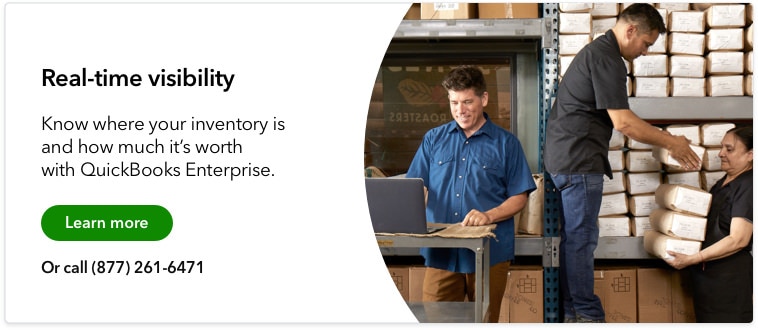Retail theft accounts for up to 1.6% of all retail inventory shrinkage. While it may seem like an insignificant amount, based on $3.1 billion in U.S. retail sales, that small percentage accounts for more than $50 billion in losses.
However, retail loss prevention is possible. By understanding what retail loss truly is, what challenges you may face to combat it, and adopting some key strategies, you can reduce your retail loss and save your company lost revenue due to theft.
What is retail loss prevention?
Retail loss prevention is the practice of preventing inventory shrinkage. While many people think of retail loss only happening in brick-and-mortar stores, ecommerce businesses, distribution centers, and manufacturing facilities are also targets for shrink. Shrink is another term for retail inventory lost through theft.
There are ways to combat retail loss, but first, it’s important to understand the different types of shrink you may encounter.
Types of inventory shrinkage
Shoplifting or theft: This is outright theft either in-store or at a fulfillment center or warehouse. This can include instances of organized retail crime (ORC) or individuals.
Return fraud: This refers to customers who attempt to steal from your organization by using unsavory tactics in the guise of making a return.
Return fraud is normally perpetrated by customers and takes a handful of forms.
- Return stolen merchandise: This is a fairly common tactic. People will steal merchandise from one retail location and return it to another. While they don’t have a receipt, most stores allow you to get at least a store credit for the merchandise’s current value.
- Return merchandise purchased with fake money or checks: This is also very common. It is fairly easy to forge checks and use them to buy merchandise. Then, it can be returned with a receipt for cash.
- Return with a fraudulent receipt: This method can be used to return stolen goods and receive cash back or to exchange stolen merchandise for new merchandise.
- Return used merchandise: It is fairly easy to do this for certain types of items. Also, retail locations have become laxer in recent years to avoid customer service hassles. For example, Target will accept returns of open makeup, and Bath and Body Works will accept returns of their products, even though they must be destroyed and cannot be resold. These larger retail chains have decided that outstanding customer service is worth the risk of possible fraud and theft.
- Return exchanged merchandise: Exchanged merchandise is used in place of issuing a full refund, especially if fraud is suspected by the retail location’s loss prevention team. However, if the thief is smart enough to take their exchanged merchandise to another location, it’s easy to get a refund on the exchanged merchandise with a claim like a new size didn’t work.
Employee theft: Employees are often the biggest source of shrinkage. Internal theft is fairly easy to execute, especially if the facility doesn’t have a lot of security measures in place in non-customer areas (i.e., stockrooms or fulfillment centers). Employees also know how to avoid bag inspections and often have enough confidence in their knowledge of the company’s procedures that they steal with certainty.
Human error: Human error can take many forms, including simply inputting the wrong number in the wrong column of a spreadsheet. With more loss prevention strategies in place, it’s harder for administrative errors to impact your bottom line directly.
Vendor fraud: This is when a vendor doesn’t deliver all of the items that were paid for or delivers different items than what was ordered. This could result in you having inventory you can’t sell and must eventually discount. Or it could result in asking the vendor to come and retrieve the fraudulent items, for which you might be charged a removal fee.
Unattributed loss: Sometimes, no matter the number of CCTVs or the size of your loss prevention team, loss happens, and sometimes you can’t find the cause. TheNational Retail Security Survey conducted by the National Retail Federation (NRF) cited that more than 7% of all annual shrink goes unattributed.
4 Effective retail loss prevention strategies
There are dozens of ways to prevent loss in your brick-and-mortar retail stores and fulfillment centers. The options you choose will depend greatly on your size and your loss prevention budget. However, there are a few standard and effective steps you can take to get your organization started on the path to loss prevention.
Install security cameras
With the right amount of security cameras, including CCTV, you can curb retail loss. Cameras are effective for retail locations, backrooms, storerooms, and fulfillment centers. They can be used to monitor both employees and customers, vendors and visitors.
As a loss prevention solution, it can also be helpful when working with law enforcement when investigating theft or other damage to your facilities. Be sure to work with an experienced security camera vendor to make sure you get adequate coverage and don’t open yourself to any blind spots.
Hire loss prevention and asset protection teams
Loss prevention teams work to recover and analyze retail loss and shrinkage, whether from internal theft or external theft. Asset protection teams work proactively to ensure that your company locations have adequate training in place, as well as the tools you need to combat loss, like electronic article surveillance or security tags. Having both is the best option for any organization, but at the very least, you should hire a dedicated loss prevention team to help monitor and identify loss.
Enact clear store policies and training
All employees need to fully understand store policies as they relate to returns with and without receipts, how to reimburse for different types of tender and more. These policies should also be clear to customers to avoid any issues with misinterpretation and lapses in customer service.
Alongside clear guidelines, loss prevention training for all employees is key. Only by enforcing policies consistently and accurately can stores work to prevent return fraud and stymie organized retail crime groups.
Improve customer service
Often the best way to deter theft is with an attentive team. Greet customers as they enter, offer to help them while they’re shopping, and check in periodically. It’s also advisable to enhance your store layout to avoid any dead spots where it’s hard to see customers or products. You can also place high-value or small, easy-to-grab items at the point-of-sale (POS) or checkout to keep them under the watchful eye of your store associates.
How to create an effective retail loss prevention plan
Creating an effective loss prevention plan is relatively easy as long as you stick to the plan and enforce your policies consistently.
- Get buy-in from store-level employees and all levels of management. Everyone in the organization needs to understand the issue and that your company is going to find ways to avoid loss and shrink.
- Incorporate loss prevention tactics at all levels. In physical locations, this could include cameras, security tags, and more. In a warehouse or distribution center, this could mean regular cycle counts to quickly check the accuracy of your inventory tracking. At the corporate level, it might mean CCTV and an asset protection team. No matter their role, all your employees should know they are responsible for loss prevention.
- Communicate information regarding shrink on a regular schedule. Successes and failures should be shared to give everyone insight into how the company is doing with its loss prevention efforts and where there is still room for improvement.
- Train your store-level associates and empower them to prevent loss. Let them know how important they are to identifying and stopping retail theft. Give them the tools and make sure they fully understand the company’s policies for the best results.
How QuickBooks Enterprise can help monitor retail losses
QuickBooks Enterprise is a best-in-class business management solution designed to keep your retail business on track. When managing your inventory and monitoring losses, Enterprise offers real-time inventory tracking from one central dashboard so your team has clear visibility for effective inventory management.
With QuickBooks Enterprise, inventory management starts the moment inventory is received at that warehouse. Barcode scanning and automation make it easier to track inventory from receipt to fulfillment.
Retail loss prevention should be top of mind for any retail business. With proper monitoring and security measures in place, plus well-trained employees and clear return policies, many business owners can keep retail loss to a minimum. Partner these techniques with a best-in-class inventory management solution and you’ll be able to get your loss prevention goals on track.












